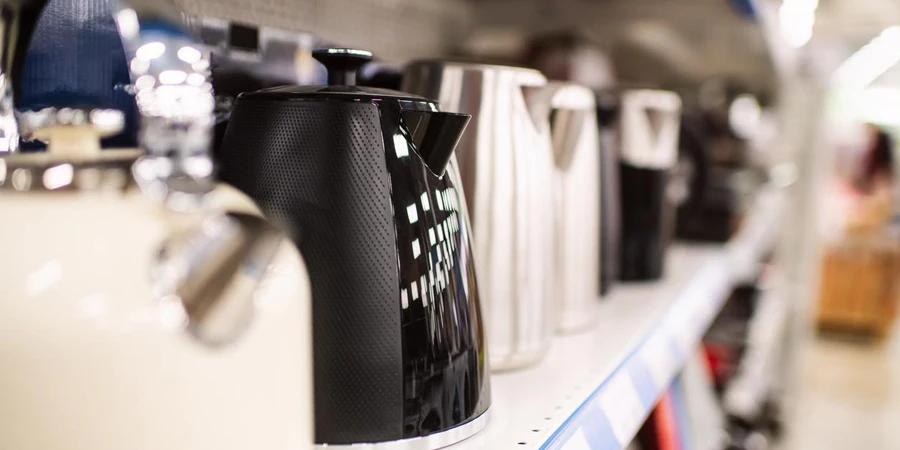The electric kettle market is witnessing a surge in demand, driven by consumers’ desire for convenience, efficiency, and style in their kitchen appliances. As the industry evolves, manufacturers are introducing innovative designs and smart features to cater to the changing preferences of tea and coffee enthusiasts worldwide.
Table of Contents
● Market Overview and Growth Projections
● Key Trends Shaping the Industry
● Market Dynamics and Regional Analysis
● Competitive Landscape and Key Players
● Future Outlook and Opportunities
Market Overview and Growth Projections
According to Statista, the global electric kettle market is projected to reach a market volume of US$5.79 billion by 2029, growing at a CAGR of 5.08% from 2024 to 2029. The North American market alone recorded a revenue of US$0.39 billion in 2024 and is expected to experience an annual growth rate of 4.24% during the forecast period.
The United States electric kettle market, in particular, has witnessed significant growth in recent years. North America’s demand for electric kettles is skyrocketing due to the increasing popularity of tea and coffee consumption. The revenue generated in the Electric Kettles market in the United States amounts to US$303.90m in 2024, and we are expecting a volume growth of 2.5% in 2025.
Key Trends Shaping the Industry
1. Adjustable Temperature Control
One of the most significant trends in the electric kettle market is the incorporation of adjustable temperature control features. Consumers are increasingly seeking kettles that allow them to precisely control the water temperature to suit different types of tea and coffee. Products like the Luna Adjustable Temperature Electric Kettle by SAKI Products offer one-touch presets for various specialty brews, including black, green, white, oolong, and herbal tea, as well as French press coffee.
This trend is driven by the growing sophistication of tea and coffee drinkers who understand that different beverages require specific water temperatures to extract the optimal flavor and aroma. By offering adjustable temperature control, electric kettle manufacturers cater to this discerning market segment and differentiate their products from basic models that only provide a single boiling point.
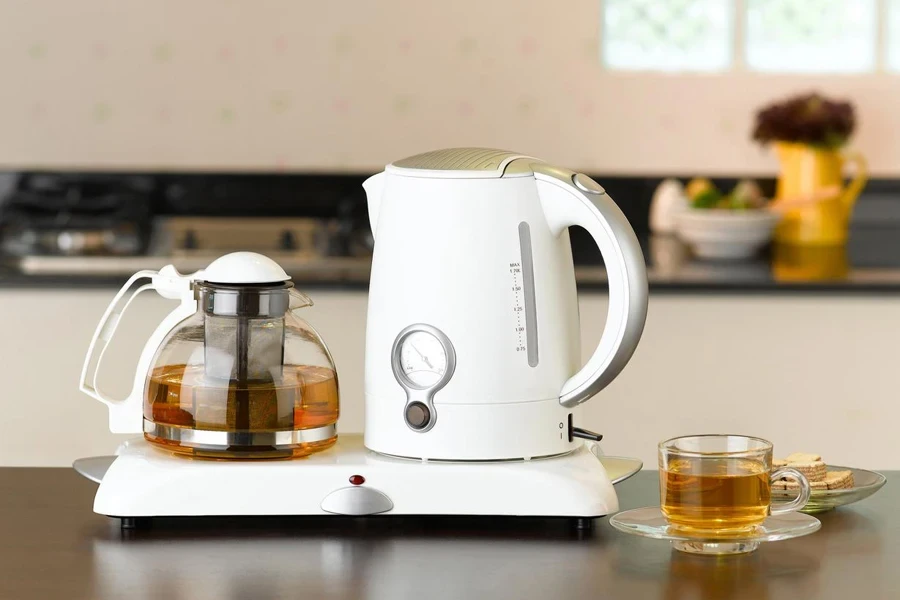
2. Sleek and Minimalist Designs
Electric kettle designs are evolving to cater to modern kitchen aesthetics. Sleek, minimalist designs with premium materials like stainless steel are gaining popularity among consumers who value both functionality and style. The HYGGE electric kettle, designed by SeungHyun Lee, exemplifies this trend with its Roman-inspired architecture and minimalistic appeal.
As kitchens become increasingly integrated with living spaces, consumers are looking for appliances that seamlessly blend with their interior décor. Manufacturers are responding to this demand by offering electric kettles in a range of finishes, from brushed stainless steel to matte black, and incorporating clean lines and subtle design elements that exude sophistication.
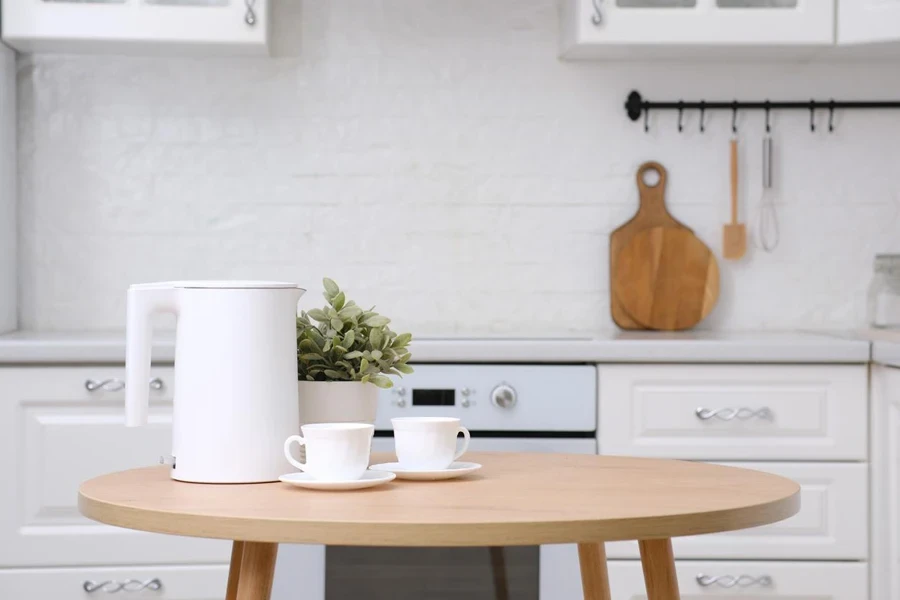
3. Smart and Connected Features
The integration of smart technology is another notable trend in the electric kettle market. Manufacturers are introducing kettles that can be controlled remotely via smartphone apps or voice assistants, offering convenience and customization options. Some high-tech models even feature digital displays that show the current water temperature, making it easier for users to monitor the heating process.
Smart kettles appeal to tech-savvy consumers who value the ability to control their appliances remotely and integrate them with their connected home ecosystems. By offering features like automatic scheduling, customizable temperature settings, and real-time notifications, smart kettles provide an enhanced user experience that goes beyond basic functionality.
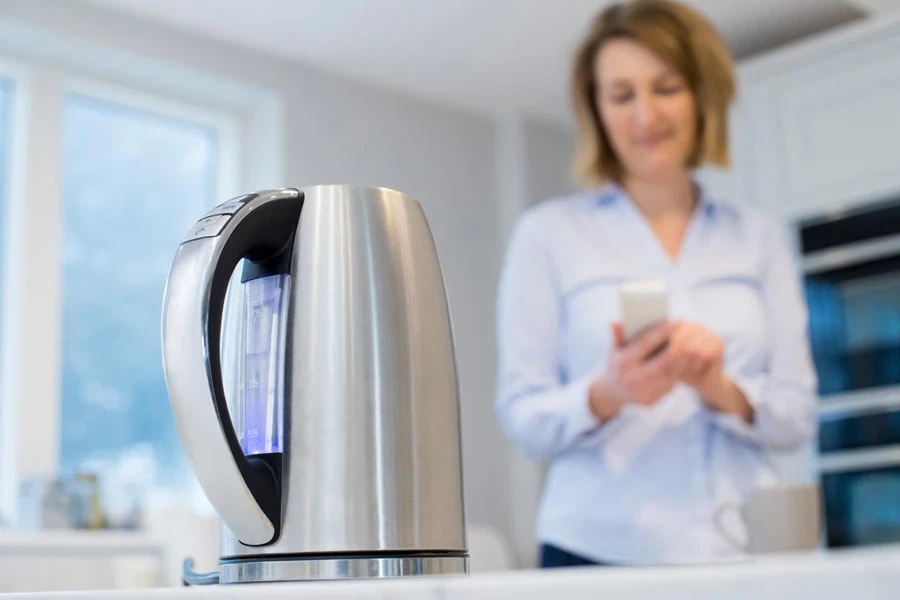
4. Energy Efficiency and Safety
Consumers are increasingly seeking electric kettles with energy-efficient features to reduce electricity consumption and align with sustainability goals. Many modern kettles are designed with automatic shut-off mechanisms and boil-dry protection to prevent overheating and ensure user safety.
As energy costs rise and environmental awareness grows, consumers are looking for appliances that minimize their carbon footprint and help them save on utility bills. Electric kettle manufacturers are addressing these concerns by incorporating advanced heating elements, improved insulation, and smart power management systems that optimize energy usage without compromising performance.
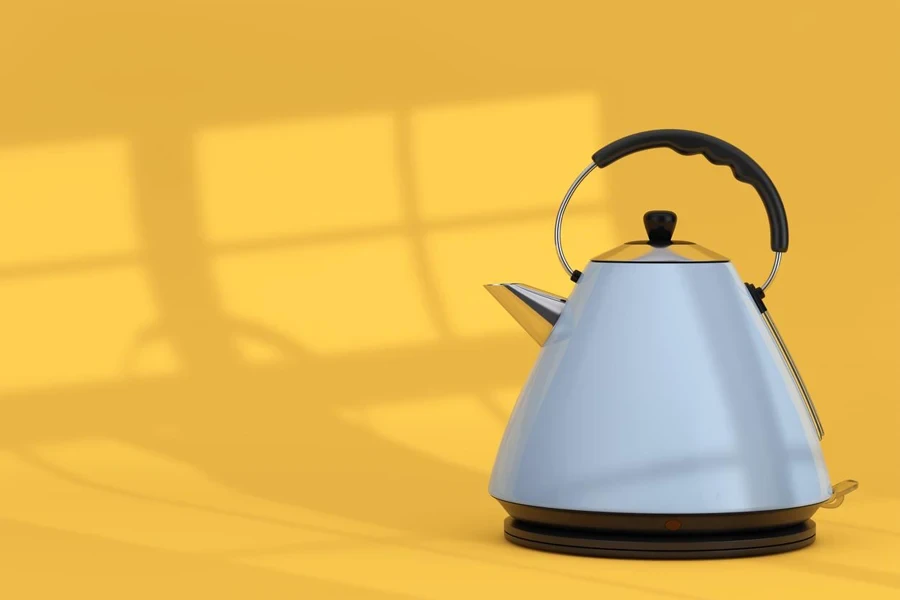
Market Dynamics and Regional Analysis
The electric kettle market is influenced by various factors, including changing lifestyle patterns, advancements in technology, and evolving environmental awareness. Urban centers, with their fast-paced lifestyles, have a higher adoption rate of electric kettles due to their time-saving benefits.
Geographically, the Asia Pacific region dominates the electric kettle market, followed by North America and Europe. The growing middle-class population, rapid urbanization, and increasing consumer spending on kitchen appliances are driving the demand for electric kettles in developing nations like India and China.
Competitive Landscape and Key Players
The electric kettle market is highly competitive, with established brands and new entrants vying for market share. Key players focus on product diversification, quality enhancements, and aggressive marketing strategies to gain a competitive edge. Some prominent companies in the market include Aroma Housewares Company, Breville USA Inc., Hamilton Beach Brands Inc., Koninklijke Philips N.V., and Zojirushi America Corporation.
Future Outlook and Opportunities

As the electric kettle market continues to evolve, manufacturers have several opportunities to capitalize on emerging trends and consumer preferences:
- Developing innovative features and designs to differentiate products and attract a broader consumer base. This could include incorporating advanced filtration systems, multiple temperature settings, and ergonomic handles for enhanced user comfort.
- Focusing on health and sustainability by using food-grade, eco-friendly materials in kettle production. Manufacturers can explore the use of BPA-free plastics, bamboo, or other sustainable materials that appeal to health-conscious and environmentally aware consumers.
- Targeting commercial spaces, such as offices and hospitality sectors, to expand sales channels. Electric kettles with larger capacities, faster boiling times, and durable construction are well-suited for high-traffic environments where reliability and efficiency are paramount.
- Implementing effective marketing campaigns and highlighting the benefits of electric kettles to drive consumer interest and demand. This could involve collaborating with influencers, creating engaging social media content, and offering promotional bundles or discounts to incentivize purchases.
- Investing in research and development to create kettles with advanced features like water purification, adjustable flow rates, and smart home integration. By staying at the forefront of technological innovation, manufacturers can capture market share and establish themselves as industry leaders.
- Exploring partnerships with complementary brands, such as tea or coffee companies, to create co-branded products or cross-promotional opportunities. These collaborations can help electric kettle manufacturers tap into new customer segments and benefit from the partner brand’s established reputation and loyal following.
The electric kettle market is poised for steady growth in the coming years, driven by consumer demand for convenience, efficiency, and style. It has become an indispensable kitchen appliance for homes, offices, and commercial settings. As manufacturers continue to innovate and incorporate smart features, adjustable temperature control, and sleek designs, the industry is set to witness a dynamic shift in consumer preferences and market dynamics.
